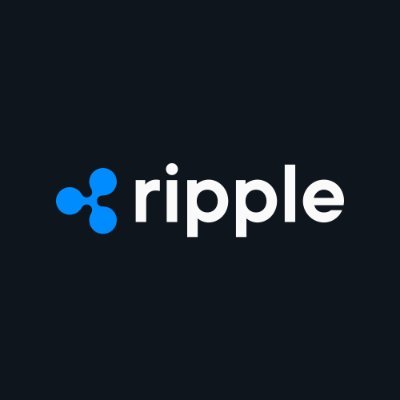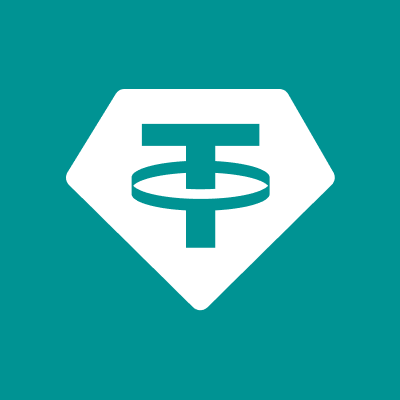A "war of words" with Ripple, Tether increases lobbying expenditures under strong regulatory trends
Author: Weilin, PANews
In recent days, Tether's CEO Paulo Ardoino and Ripple's CEO Brad Garlinghouse have been embroiled in a several-day "war of words." Garlinghouse pointed out that the next regulatory hammer from the U.S. SEC would fall on Tether, which Ardoino immediately denied.
In fact, the current regulatory environment in the U.S. is imposing more compliance requirements on stablecoin issuers. On April 17 of this year, two U.S. lawmakers introduced the Lummis-Gillibrand Payment Stablecoin Act, marking the latest legislative and regulatory trend regarding stablecoins. In response, international credit rating agency S&P Global Ratings pointed out at the end of last month that if the latest stablecoin bill proposed in the U.S. Senate is passed, it could encourage banks to enter the stablecoin market and weaken Tether's dominant position.
As a stablecoin with an extremely high market share, will Tether, the issuer of USDT, face a black swan event brought about by regulation? From a series of recent moves announced by Tether, it appears that Tether has a strategy in place. In addition to expanding its business landscape to achieve revenue diversification, it is also increasing its lobbying efforts.
Divergent Views on Regulatory Issues: Ripple Claims Analysis Based on U.S. Regulatory Trends
On May 10, Ripple's CEO Garlinghouse stated in the "World Class" podcast that since the collapse of FTX and the imprisonment of former CEO SBF, as well as the recent conviction and sentencing of Binance's former CEO Changpeng Zhao (CZ), Tether is the next major crypto company targeted by the U.S. SEC.
"Do I think there will be another black swan event? Absolutely, 100%," Garlinghouse said. "I just don't know what exactly it will be… The U.S. government is going after Tether," he said, "that is obvious to me."
Garlinghouse stated that Tether is "a very important part of the ecosystem," adding, "I don't know how to predict what kind of impact it will have on the entire ecosystem."
This direct prediction angered Tether CEO Paulo Ardoino, who fiercely retaliated on May 13. "A CEO who doesn't understand the situation, leading a company under SEC investigation, has launched a competing stablecoin and is reported to be spreading fear about USDT," Ardoino wrote in a post on X. "The real facts show that Tether utilizes the transparency of blockchain technology and collaborates with global law enforcement agencies to be compliant."
Ardoino shared examples of Tether's policies, actions, and cooperation with law enforcement agencies in the U.S. and around the world. "Since its inception, Tether has collaborated with 124 law enforcement agencies in over 40 different countries to freeze more than $1.3 billion, most of which is related to fraud, hacking, and money laundering, with about $1.6 million related to terrorist financing. In just the past 12 months, Tether voluntarily assisted law enforcement in blocking 198 wallet requests (90 of which were in cooperation with U.S. law enforcement), and in the past three years, blocked 339 requests (158 of which were in cooperation with U.S. law enforcement)."
In response to Tether's rebuttal, Ripple CEO Garlinghouse later replied on X on May 13, stating that "(previous comments) were not an attack on Tether… My point is that the U.S. government has made it clear that they want to strengthen control over U.S. dollar-backed stablecoin issuers, so Tether, as the largest player, is among their targets."
New Stablecoin Bill Proposed by U.S. Senators: Is Tether Facing "Exit" Risks?
The war of words is primarily fueled by the latest stablecoin regulatory bill proposed by U.S. lawmakers in April this year. Currently, the market value of stablecoins is approximately $150 billion, with Tether (USDT) having a market capitalization of around $106 billion. It is expected that the stablecoin market will exceed $2.8 trillion by 2028, making any regulatory developments regarding stablecoins a focal point for the market.
The stablecoin bill is actually an old topic; relevant drafts were passed as early as the first half of 2023, but they were not substantively approved for implementation. However, on April 17 of this year, U.S. Senators Cynthia Lummis (Republican, Wyoming) and Kirsten Gillibrand (Democrat, New York) introduced the Payment Stablecoin Act of 2024. Gillibrand called it "landmark bipartisan legislation that creates a clear regulatory framework for payment stablecoins, which will protect consumers, promote innovation, and bolster the dollar's dominance while maintaining a dual banking system."

Senators Cynthia Lummis and Kirsten Gillibrand, who proposed the 2024 Payment Stablecoin Act, at the DC Blockchain Summit in 2022
The proposal will bring oversight and transparency to the $150 billion stablecoin industry and could become the first significant cryptocurrency legislation in the U.S., making it easier for state and federal regulatory banks to hold digital assets on behalf of clients.
The bill will allow non-depository trust companies (non-banks) to issue stablecoins as long as the nominal value of all their tokens is below $10 billion. According to the text of the bill, larger stablecoin issuers must be "authorized depository institutions for national payment stablecoin issuers." If the bill becomes law, companies like Circle (which issues $33 billion USDC) or Paxos ($135 million PAXD) will have two options: either through state-level non-banks or as federally or state-authorized national payment stablecoin providers. Any other form of stablecoin issuance will be prohibited, including algorithmic payment stablecoins.
Moreover, the bill includes an "extraterritorial clause," meaning these laws apply to companies outside the U.S., such as Tether. Tether is headquartered in the British Virgin Islands, which presents a very delicate situation regarding registration issues, as USDT is widely circulated among U.S. investors and exchanges, but Tether claims it does not serve U.S. customers since it does not directly issue tokens to these companies. The U.S. Treasury hopes to gain the authority from Congress to pursue stablecoin issuers like Tether, as they are concerned that criminals use dollar-backed tokens to obscure transactions.
In recent years, U.S. regulators have made various attempts at cryptocurrency legislation, some focusing on setting rules for stablecoins, while others try to define when digital assets are securities and when they are commodities to determine which U.S. regulatory agency has jurisdiction, such as the SEC or the Commodity Futures Trading Commission (CFTC). Last year, two such bills passed the House Financial Services Committee, but the Senate did not adopt any bills due to a lack of enthusiasm from Senate Banking Committee Chairman Sherrod Brown (Democrat, Ohio). However, in a recent Bloomberg interview, Brown indicated for the first time that he might be open to stablecoin legislation.
Multi-Channel Business Adjustments: Tether Has Significantly Increased Lobbying Expenditures
Meanwhile, Tether's financial performance in Q1 of this year has been impressive. In the first quarter of 2024 alone, Tether reported an unaudited company "financial performance" of $4.5 billion, with net assets of $11.4 billion. In 2023, the company reported a net profit of $6.2 billion, likely making it the most profitable company in the cryptocurrency space today.
In contrast, the largest cryptocurrency exchange in the U.S., Coinbase, has performed much less favorably, with total revenue of $3.1 billion and a profit of $95 million in 2023, and a net income of $1.2 billion in Q1 of 2024.
With ample capital, Tether is also beginning to seek growth outside of stablecoins. Last month, Tether announced a strategic restructuring to expand into three new areas: Bitcoin mining, artificial intelligence (AI), and education. At the same time, the company announced that it would restructure its operations into four independent departments to reflect its increasingly broad focus: (1) Finance, responsible for managing USDT and overseeing the upcoming digital asset tokenization platform; (2) Data, responsible for strategic investments in emerging technologies, including AI and P2P platforms; (3) Energy, focused on Bitcoin mining and energy-related projects; (4) Education, supporting educational and leadership programs.
According to Tether CEO Ardoino, the company has doubled its workforce over the past year to about 100 employees. According to data from DefiLlama, as of May 14, USDT still holds a 69% share of the stablecoin market, but its dominance is not without challenges. For example, according to an analysis by payment giant Visa and enterprise blockchain data platform Allium Labs, Circle's USDC reached a trading volume of 178.6 million transactions in April 2024, surpassing USDT's 173.9 million monthly transactions.
The aforementioned bill also presents a significant opportunity for non-bank entities like Coinbase and Ripple, potentially making them the biggest winners. Coinbase went public in April 2021, and its stock has risen 274% over the past 12 months, primarily due to the recovery of the cryptocurrency market. Circle has also submitted a confidential S-1 filing to the SEC, planning for a future IPO. These two companies are co-issuers of USDC and share the investment income from their $33 billion collateral on a 50/50 basis. If Tether loses market share due to this bill, these companies will be the first to benefit.
To cope with the increasingly pressured regulatory environment, Tether has also made ongoing efforts. In addition to adjusting its business, it has invested significant financial resources to gain more recognition and understanding from regulators regarding cryptocurrencies and the industry. According to data from the nonprofit organization OpenSecrets, which tracks political spending, Tether's parent company iFinex increased its lobbying expenditures by over 150% in 2023, reaching $1.2 million, making iFinex the third-largest spender in the cryptocurrency sector, behind only Coinbase and the industry organization Blockchain Association.















